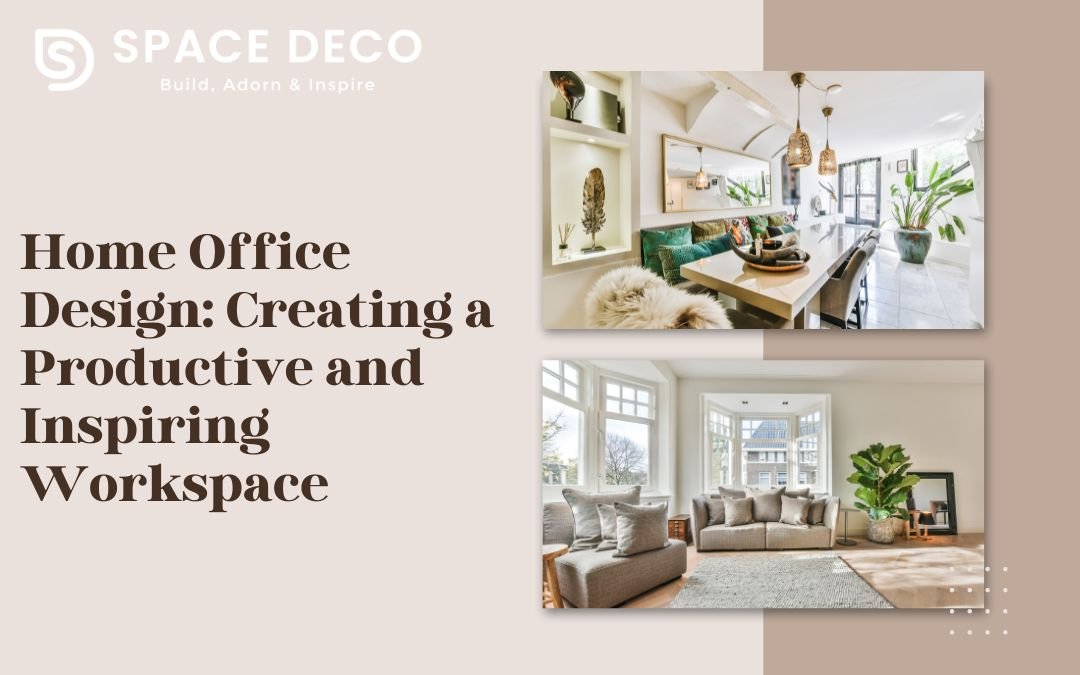With the rise of remote work and the increasing need for a designated workspace at home, creating a productive and inspiring home office has never been more important. A well-designed home office can boost productivity, creativity, and overall well-being. In this comprehensive guide, we will explore the key elements of home office design, including layout, furniture, lighting, and decor, to help you create a workspace that enhances your work-from-home experience.
- Choosing the Right Location
The first step in designing a home office is choosing the right location. Ideally, your home office should be located in a quiet area of your home where you can focus without distractions. Consider a room with natural light and a view if possible, as natural light has been shown to improve mood and productivity.
- Designing the Layout
The layout of your home office plays a crucial role in its functionality and comfort. Start by determining the placement of your desk and office chair, ensuring that you have enough space to move around comfortably. Consider the location of power outlets and lighting fixtures when planning your layout.
- Selecting the Right Furniture
Investing in ergonomic furniture is essential for creating a comfortable and productive home office. Choose a desk and chair that provide proper support for your posture and allow for easy adjustment. Consider additional storage solutions such as shelves, drawers, and filing cabinets to keep your workspace organized and clutter-free.
- Maximizing Storage and Organization
Effective storage and organization are key to maintaining a productive workspace. Use shelves, cabinets, and drawers to keep your office supplies, files, and equipment neatly stored and easily accessible. Consider using storage solutions that are both functional and stylish to enhance the overall look of your home office.
- Incorporating Technology
Technology plays a crucial role in modern home office design. Ensure that your home office is equipped with the necessary technology, including a reliable internet connection, computer, printer, and other essential devices. Consider investing in cable management solutions to keep cords and cables organized and out of sight.
- Enhancing Lighting
Good lighting is essential for a productive home office. Natural light is ideal, so place your desk near a window if possible. Supplement natural light with task lighting, such as a desk lamp, to reduce eye strain and create a well-lit workspace. Consider using adjustable lighting fixtures to customize the lighting to suit your needs throughout the day.
- Personalizing the Space
Personalizing your home office can help create a space that inspires creativity and productivity. Add personal touches such as artwork, photographs, and plants to make the space feel more inviting and reflective of your personality. Consider incorporating elements that motivate you, such as a vision board or inspirational quotes.
- Creating a Comfortable Environment
Comfort is key when designing a home office. Choose furniture that is comfortable and supportive, and add elements such as rugs and curtains to create a cozy atmosphere. Consider incorporating elements that promote relaxation, such as a comfortable chair or a small indoor fountain, to help reduce stress and enhance focus.
Conclusion
Designing a home office that is both productive and inspiring requires careful consideration of layout, furniture, lighting, and decor. By following the tips outlined in this guide, you can create a workspace that enhances your work-from-home experience and helps you achieve your professional goals. Remember to personalize your space to reflect your personality and style, and don’t be afraid to experiment with different design elements to create a home office that is uniquely yours.

